Paintings of Pompeii: fresco windows into an ancient world
An exhibition in Bologna, Italy, offers a glimpse into the homes of ancient Pompeii. When Vesuvius erupted in 79 AD it not only destroyed a city & thousands of lives, but covered & protected the Roman architecture. As Pompeii has been revealed, so too have immaculate & detailed wall paintings, each offering a window into the ancient civilisation, its artists & how homes were decorated.
An exhibition of artworks and wall paintings unearthed from
the remains of Pompei which had been on tour to the USA has now returned to
Italy and in the process has expanded in scale and scope. The
Painters of Pompeii includes over 100 rare frescoes of exquisite detail and
creative skill, from tiny architectural fragments focusing on details of process or craft, through to immense and delicately extracted and preserved panels which immediately take the visitor back to the feel of interior design of the finest homes of 2000 years ago.
However, the exhibition goes deeper than the surface of the paintings. While each painting on display is a remarkable object and artwork in itself, the curation and contextual information offers rich context and exploration of the history, processes and purposes of such frescoes, explaining them not only as decoration, but as purposeful and profound components of the city’s architecture.
![]()
![]()
![]()
![]()
figs.i-iv
Early on in the exhibition a timeline presents the four stages of fresco design:
1st style (second half of the 3rd to the 2nd century BC)
Iin which began the artform, presenting an imitation of architectural grandeur into the domestic setting, using an illusion of a marble surface, using a stucco relief, and with a limited colour palette.
2nd style (end of the 2nd century to the early 1st century BC, the Age of Caesar)
When the fresco industry dramatically developed, drawing from Hellenistic aesthetics and featuring illusionistic architecture with figures on podiums in richly dramatic, stylised settings.
3rd style (27 BC to 40 AD, the Age of Augustus)
Tastes of interior design changed, with a preference for monochrome frescoes embellished with narrow decorative elements and bands to frame large central paintings of landscapes and bucolic scenes.
4th style (40 to 79 AD, the Age of Nero)
Architectural and landscape scenery became fantastical and exaggerated, with mythological subjects and vast, richly illustrated scenes filled with statuary, influenced by theatrical presentations and dramatic narratives.
![]()
![]()
![]()
A display of artistic tools and materials helps illustrate the skill and craft of the fresco painters. Cups holding 2,000 year old pigmentation, preparatory drawings scratched into a wall’s surface, plumb lines, compasses, and squares are shown as the tools of artists who not only carried great skill but in some cases earned great fame, developing stylistic approaches copied by others.
![]()
![]()
We are shown the comparative prices of different pigments. Red ochre and blue cost as little as 6 assi for a libbra in weight (about 0.327kg) while true purple may cost as much as 480 assi per libbra. When you compare this to the price of a loaf of bread at 2 assi, a glass of wine at up to 3.5 assi, or the services of a prostitute at between 1 and 5 assi, it’s easy to see how paintings of rich colour were also used as a symbol of wealth, status, and power. On top of the raw ingredients, the daily cost for a figurative paper was up to 150 denari (or 2,400 assi) and so to decorate a home was no cheap undertaking.
This only makes some of the examples on show even more astonishing, not least because the exhibition is not only showing small examples, but large and carefully extracted fragments of architecture, one alone measuring 5 by 3 metres. In such scale, it’s possible to truly understand the talent on display, and to step back and understand how a whole room or wall of such decorative art would have been a truly awe inspiring way to dress a home.
![]()
![]()
![]()
![]()
The curation, by Roman art expert Mario Grimaldi, takes the visitor through different themes of fresco design, with a wealth of mythological characters, heroes, and idealised bodies on display, with well executed diagrams showing where the fragment was once positioned within the architectural setting.
Another theme highlighted is the influence of theatre and music into interior decoration, with not only dramatic moments recreated but also specific celebrity actors of the day alongside recreations of set design, masks, and also representations of the actors behind the scenes or during rehearsal.
![]()
![]()
![]()
figs.xv-xvii
There’s a real depth to the meaning and illustration on show, and that’s no more evident as when architecture not only becomes the surface onto which the artwork is presented but also the subject itself. Over the four periods of artistic styles, artists honed and developed how architecture was represented in their works. Initially reproduced in a realist style, developing through a period of elegance and decorative style, until eventually becoming a splendorous tweak of realism, folding architectural iconicism and luxury into the domestic realm.
Some fragments on display feature perspectival vantages upon celebrated or respected architectural settings, while other walls become a trompe-l'œil in which the architectural decoration transformed the flat walls of the home into a space of depth, luxury, and rich decoration.
![]()
![]()
![]()
![]()
figs.xviii-xxii
Landscape was also regularly rendered into frescoes, with vast paintings of idyllic sacral settings framed and presented as a window into another realm. Other images playfully overlap the two disciplines of the man-made and natural world, illustrating a highly developed and nuanced understanding of place. That is, until 79 AD when Vesuvius erupted.
When the volcano buried the city of Pompeii and its inhabitants, it was a disaster killing thousands but also preserving a moment of ancient civilisation which speaks so richly to today’s art, architecture, and how architecture both uses and is represented in art.
![]()
![]()
![]()
![]()
figs.xxiii-xxvi
However, the exhibition goes deeper than the surface of the paintings. While each painting on display is a remarkable object and artwork in itself, the curation and contextual information offers rich context and exploration of the history, processes and purposes of such frescoes, explaining them not only as decoration, but as purposeful and profound components of the city’s architecture.
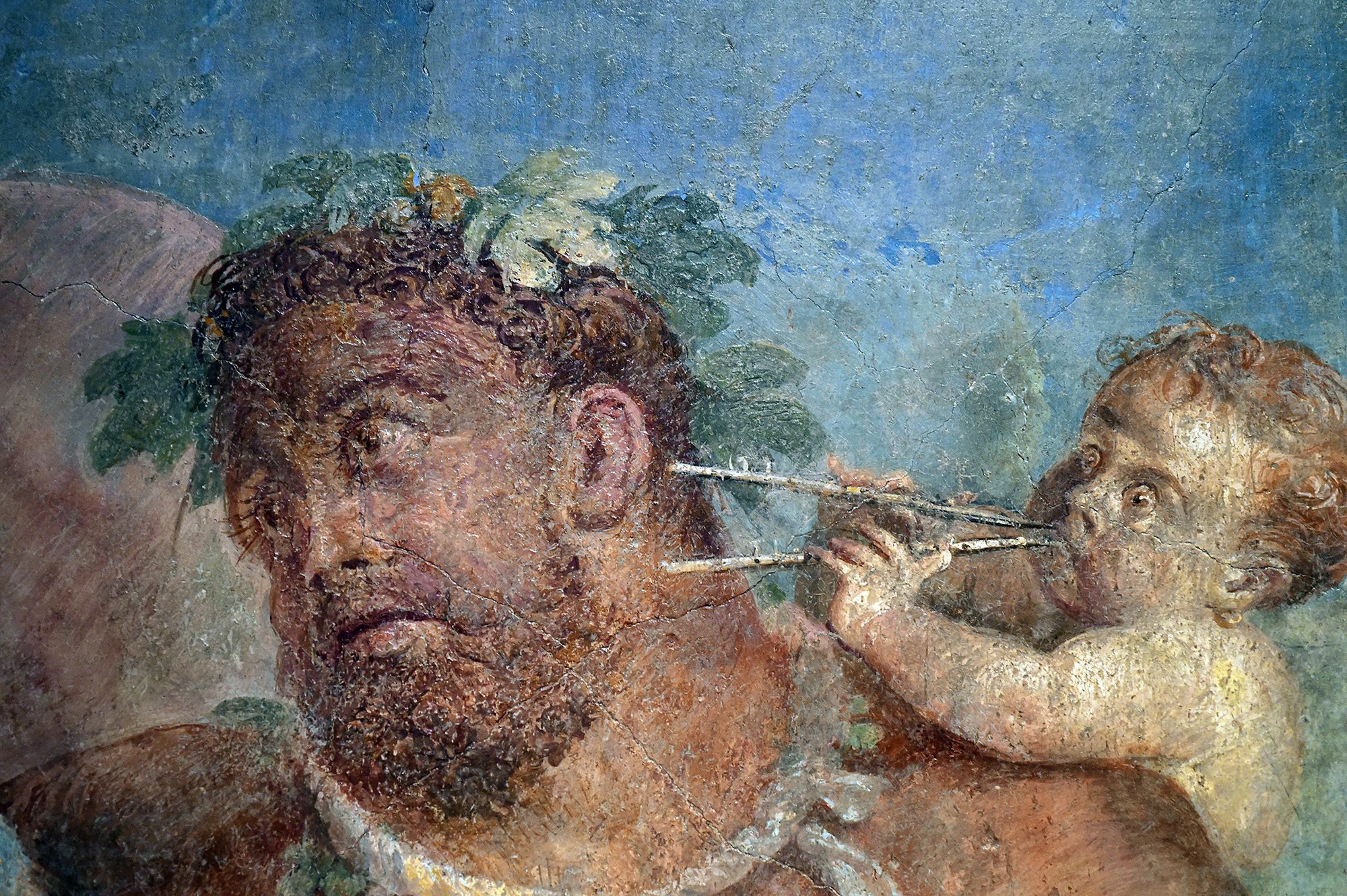
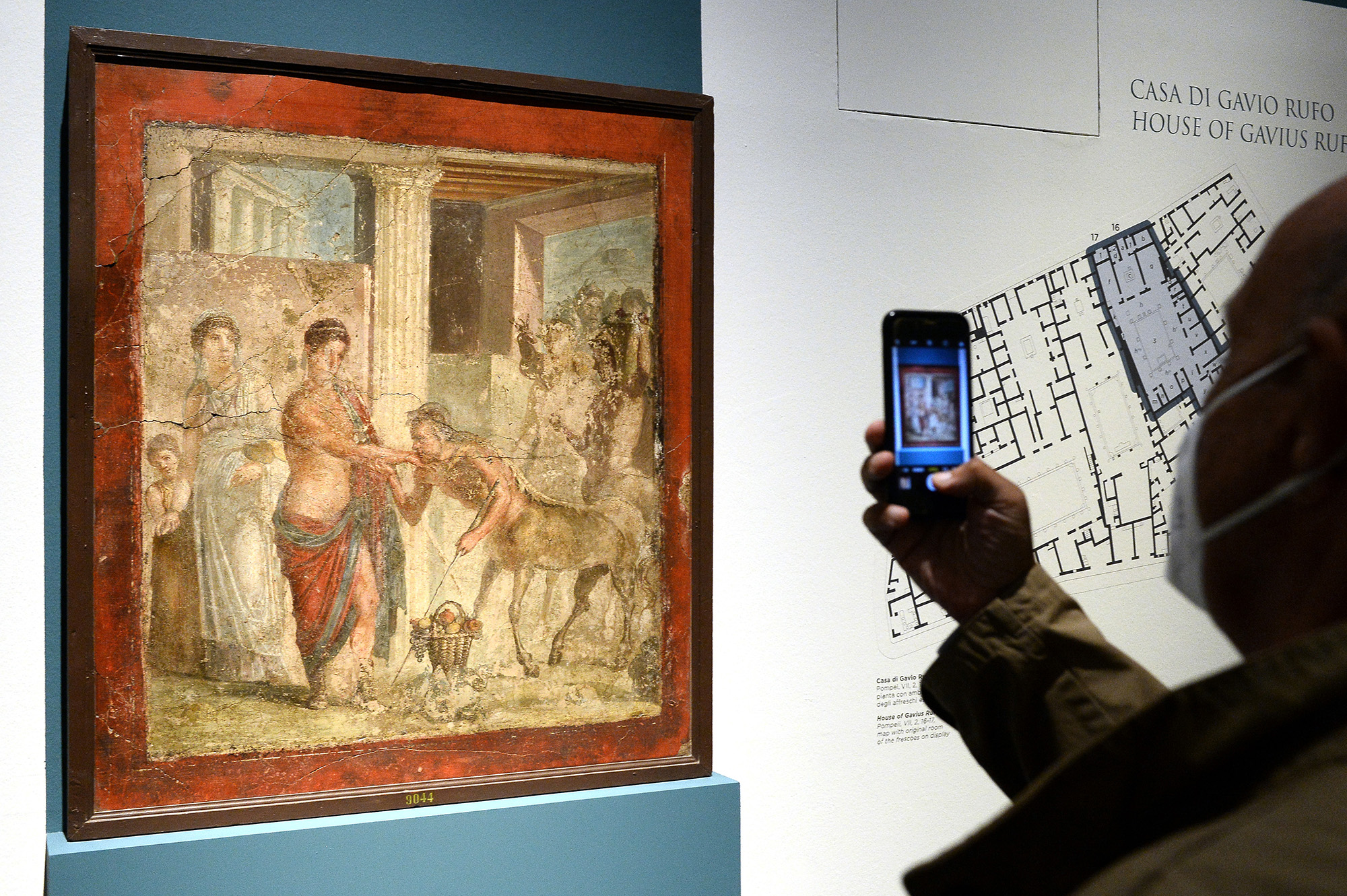
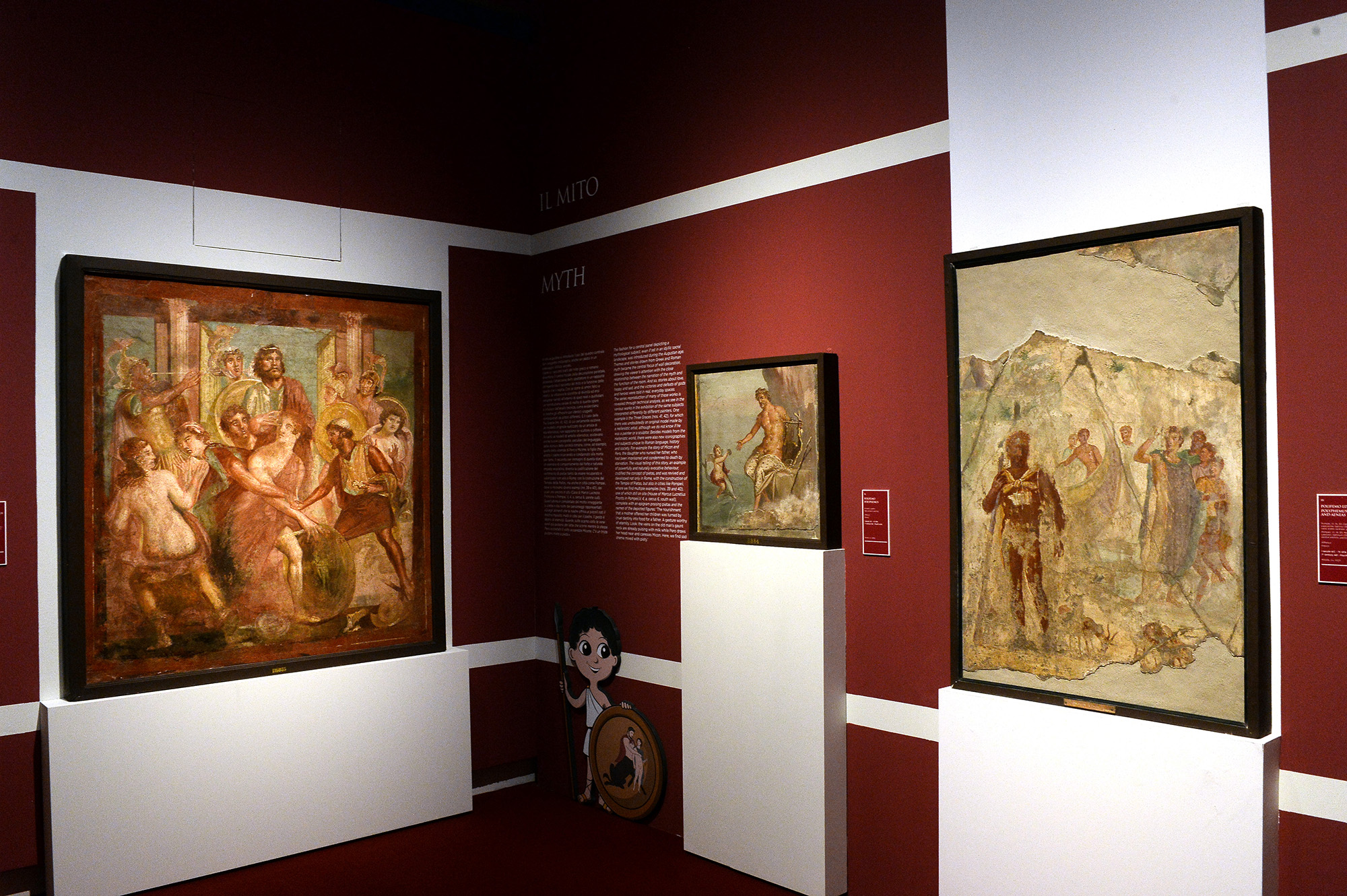
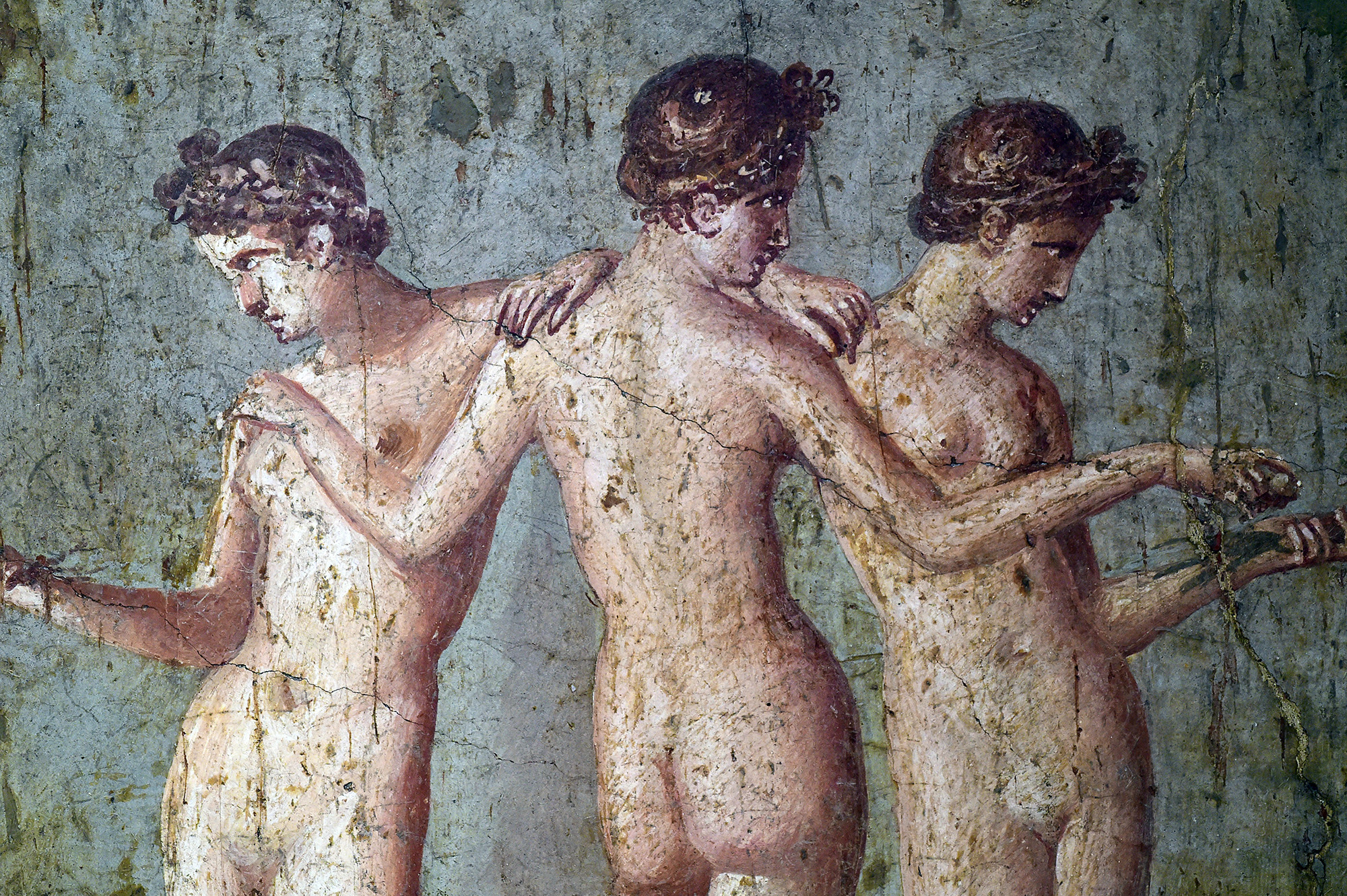
figs.i-iv
Early on in the exhibition a timeline presents the four stages of fresco design:
1st style (second half of the 3rd to the 2nd century BC)
Iin which began the artform, presenting an imitation of architectural grandeur into the domestic setting, using an illusion of a marble surface, using a stucco relief, and with a limited colour palette.
2nd style (end of the 2nd century to the early 1st century BC, the Age of Caesar)
When the fresco industry dramatically developed, drawing from Hellenistic aesthetics and featuring illusionistic architecture with figures on podiums in richly dramatic, stylised settings.
3rd style (27 BC to 40 AD, the Age of Augustus)
Tastes of interior design changed, with a preference for monochrome frescoes embellished with narrow decorative elements and bands to frame large central paintings of landscapes and bucolic scenes.
4th style (40 to 79 AD, the Age of Nero)
Architectural and landscape scenery became fantastical and exaggerated, with mythological subjects and vast, richly illustrated scenes filled with statuary, influenced by theatrical presentations and dramatic narratives.

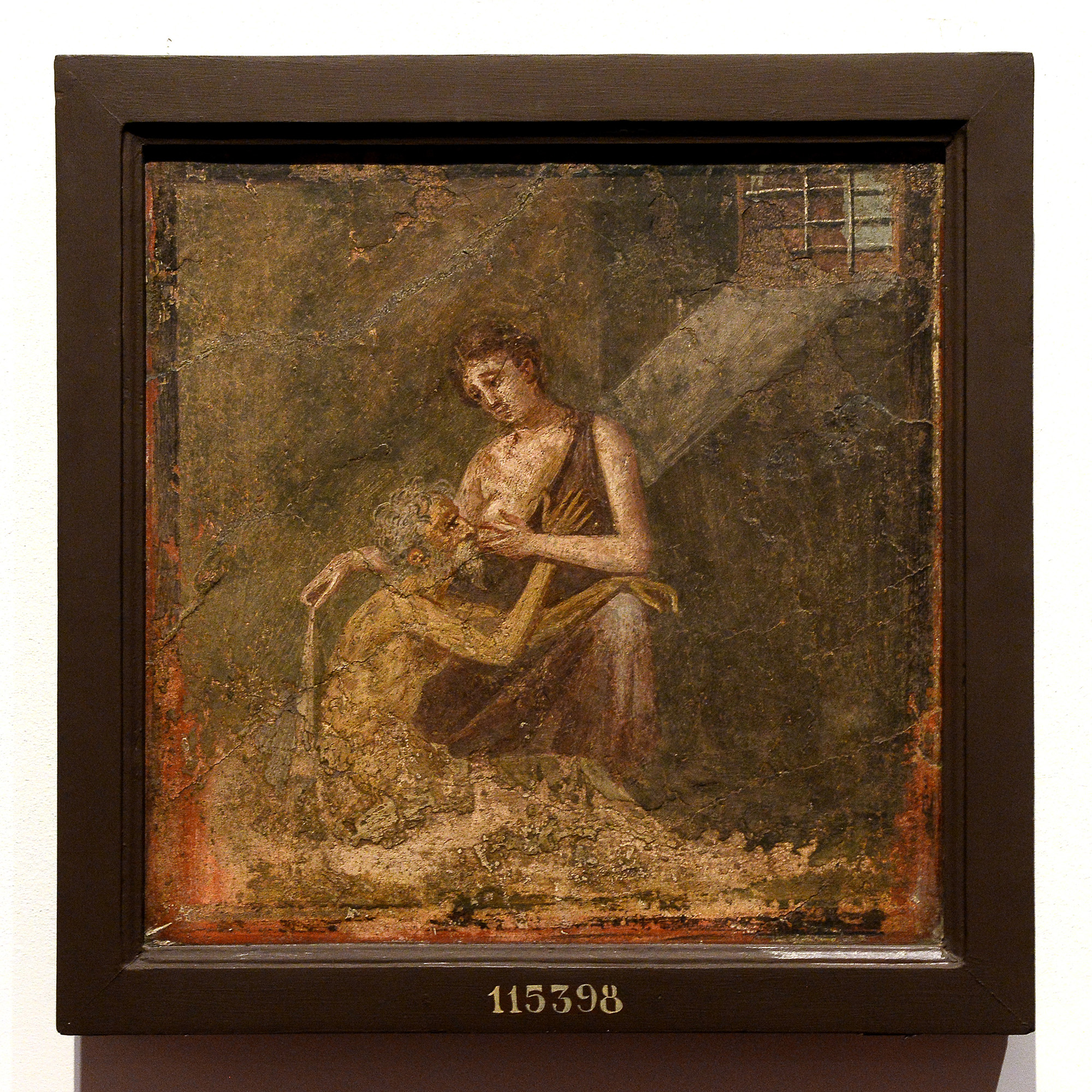

figs.v-vii
A display of artistic tools and materials helps illustrate the skill and craft of the fresco painters. Cups holding 2,000 year old pigmentation, preparatory drawings scratched into a wall’s surface, plumb lines, compasses, and squares are shown as the tools of artists who not only carried great skill but in some cases earned great fame, developing stylistic approaches copied by others.


figs.viii,ix
We are shown the comparative prices of different pigments. Red ochre and blue cost as little as 6 assi for a libbra in weight (about 0.327kg) while true purple may cost as much as 480 assi per libbra. When you compare this to the price of a loaf of bread at 2 assi, a glass of wine at up to 3.5 assi, or the services of a prostitute at between 1 and 5 assi, it’s easy to see how paintings of rich colour were also used as a symbol of wealth, status, and power. On top of the raw ingredients, the daily cost for a figurative paper was up to 150 denari (or 2,400 assi) and so to decorate a home was no cheap undertaking.
This only makes some of the examples on show even more astonishing, not least because the exhibition is not only showing small examples, but large and carefully extracted fragments of architecture, one alone measuring 5 by 3 metres. In such scale, it’s possible to truly understand the talent on display, and to step back and understand how a whole room or wall of such decorative art would have been a truly awe inspiring way to dress a home.
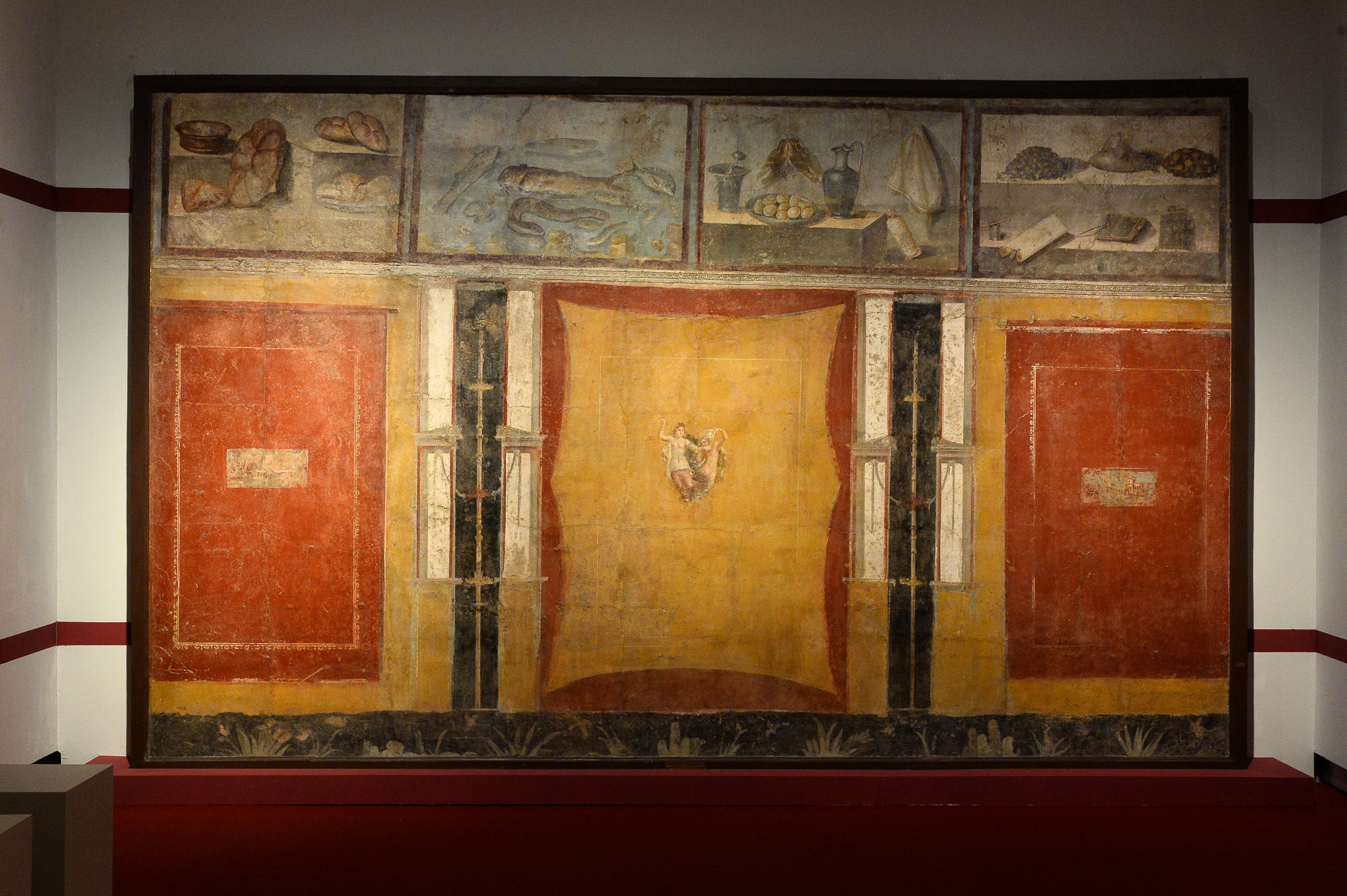


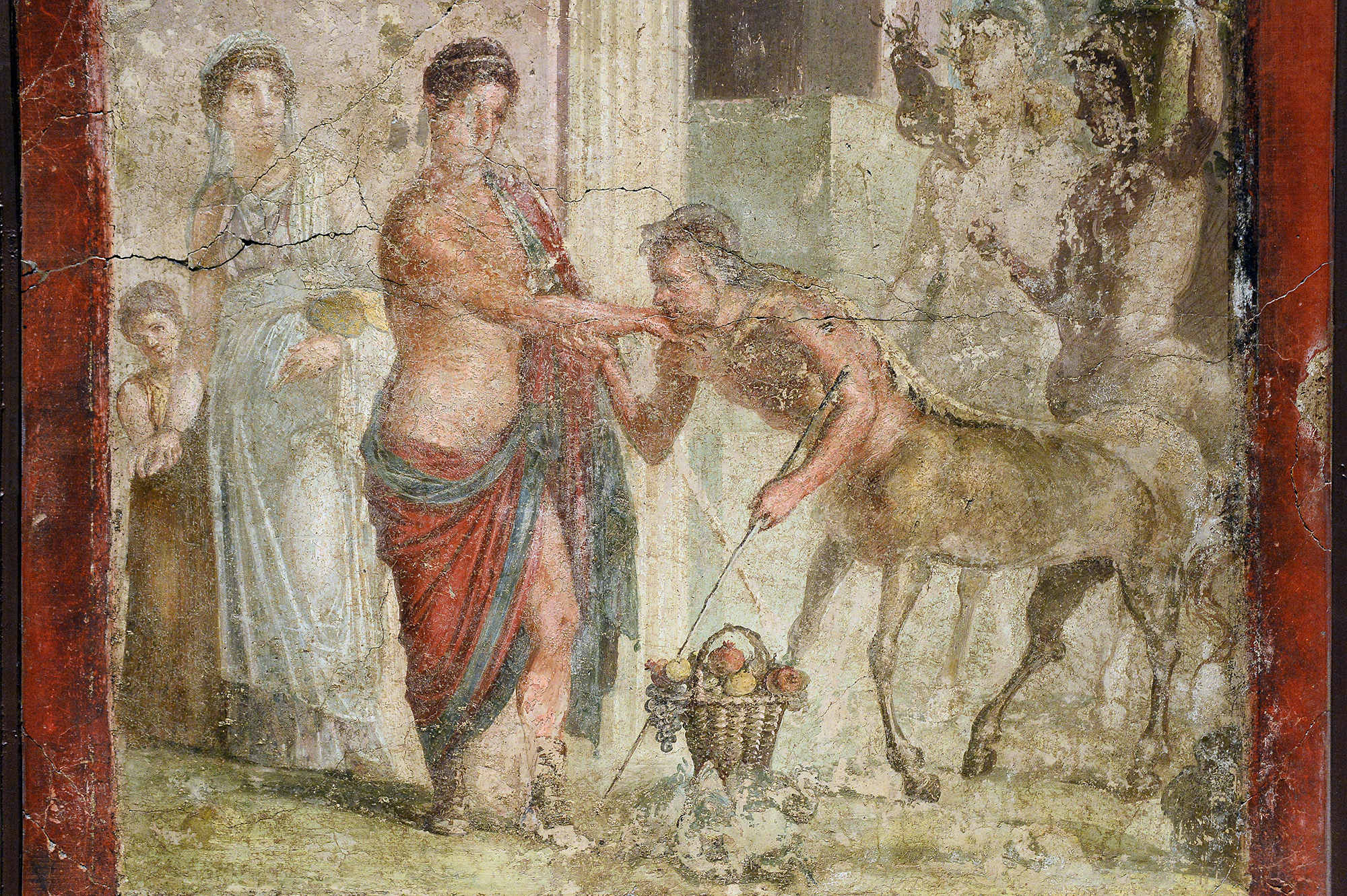
figs.xi-xiv
The curation, by Roman art expert Mario Grimaldi, takes the visitor through different themes of fresco design, with a wealth of mythological characters, heroes, and idealised bodies on display, with well executed diagrams showing where the fragment was once positioned within the architectural setting.
Another theme highlighted is the influence of theatre and music into interior decoration, with not only dramatic moments recreated but also specific celebrity actors of the day alongside recreations of set design, masks, and also representations of the actors behind the scenes or during rehearsal.



figs.xv-xvii
There’s a real depth to the meaning and illustration on show, and that’s no more evident as when architecture not only becomes the surface onto which the artwork is presented but also the subject itself. Over the four periods of artistic styles, artists honed and developed how architecture was represented in their works. Initially reproduced in a realist style, developing through a period of elegance and decorative style, until eventually becoming a splendorous tweak of realism, folding architectural iconicism and luxury into the domestic realm.
Some fragments on display feature perspectival vantages upon celebrated or respected architectural settings, while other walls become a trompe-l'œil in which the architectural decoration transformed the flat walls of the home into a space of depth, luxury, and rich decoration.
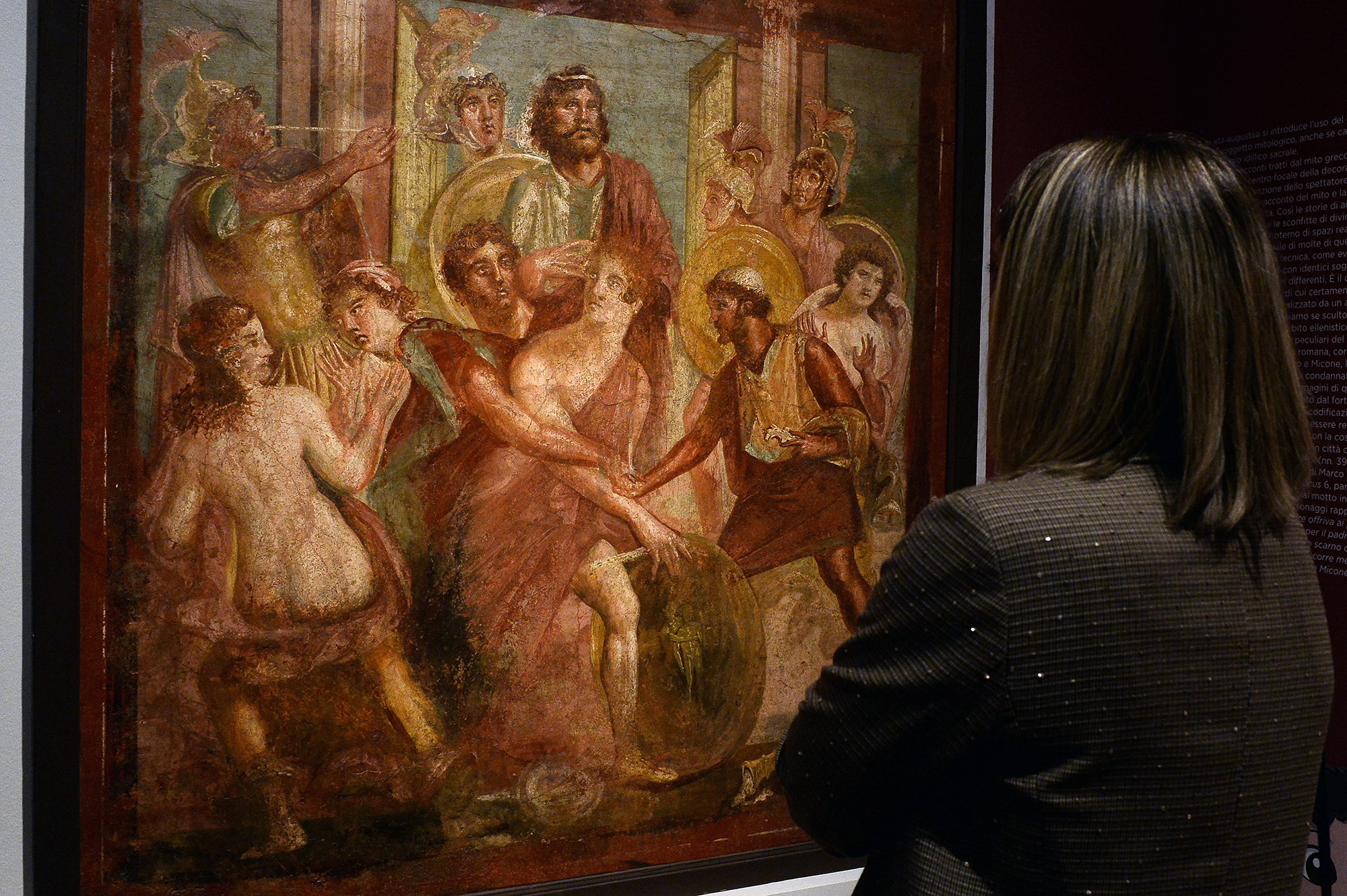



figs.xviii-xxii
Landscape was also regularly rendered into frescoes, with vast paintings of idyllic sacral settings framed and presented as a window into another realm. Other images playfully overlap the two disciplines of the man-made and natural world, illustrating a highly developed and nuanced understanding of place. That is, until 79 AD when Vesuvius erupted.
When the volcano buried the city of Pompeii and its inhabitants, it was a disaster killing thousands but also preserving a moment of ancient civilisation which speaks so richly to today’s art, architecture, and how architecture both uses and is represented in art.

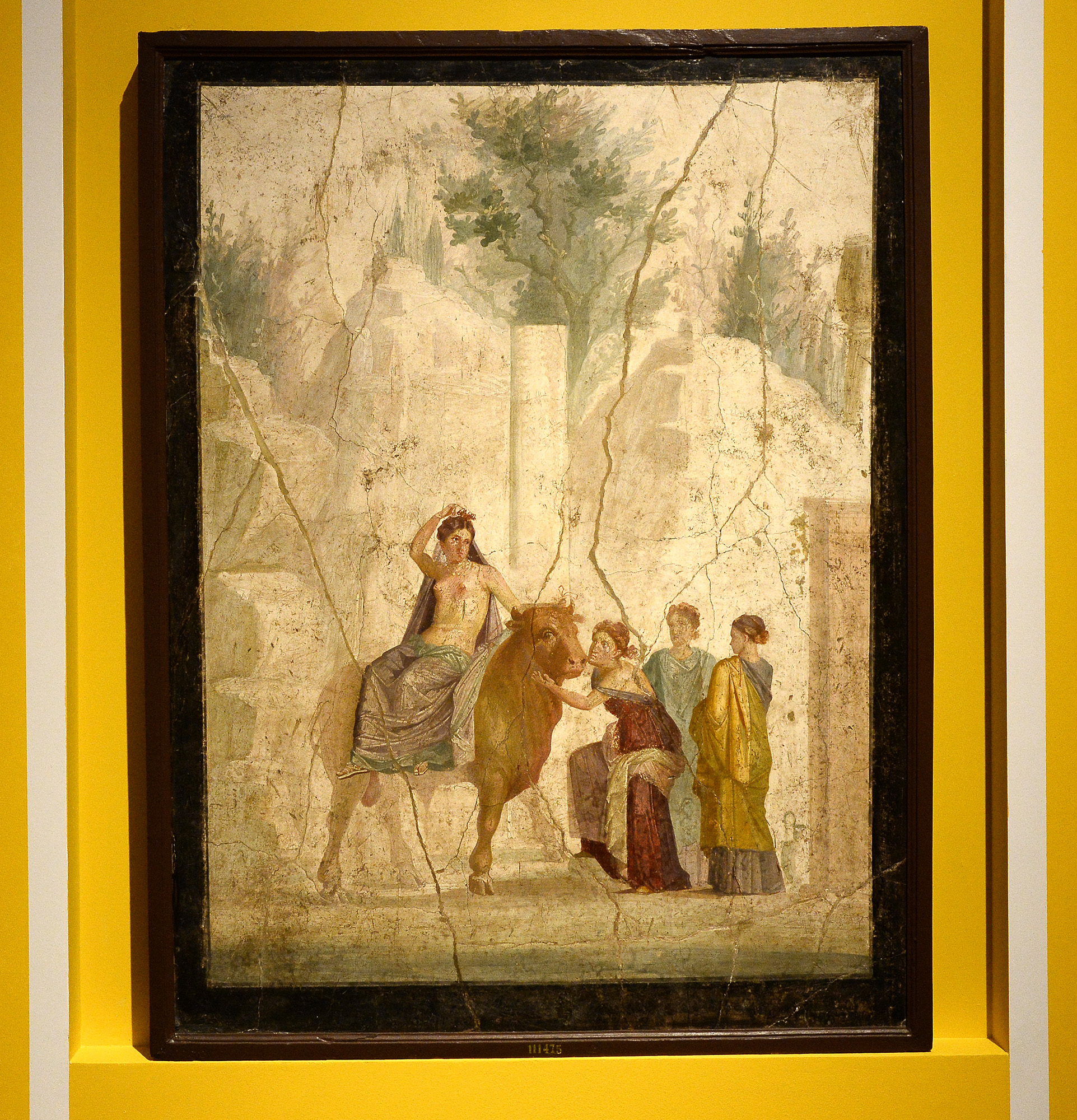

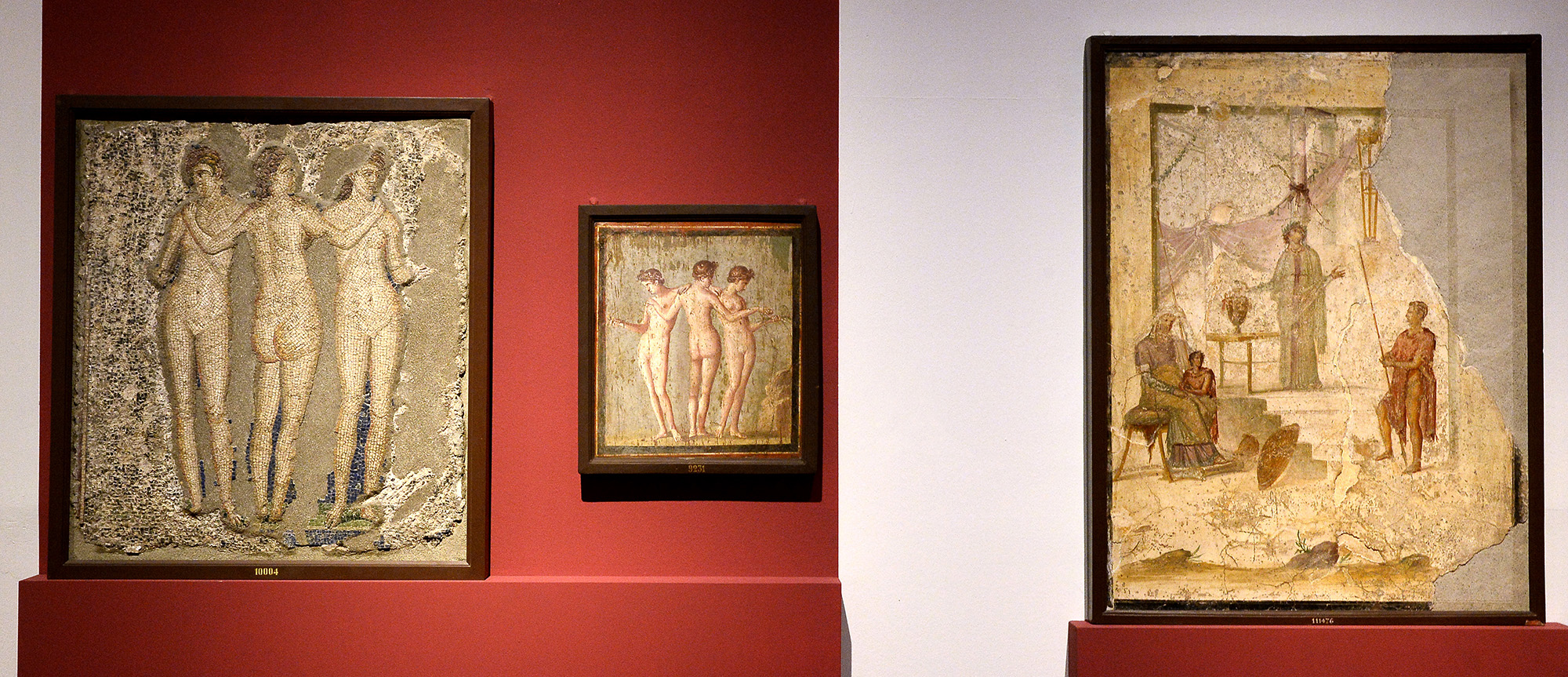
figs.xxiii-xxvi
visit
The Painters of Pompeii is exhibiting at the Museo Civico Archeologico, Bologna until 19 March 2023. The display is produced by MondoMostre in collaboration with the Municipality of Bologna and the National Archaeological Museum of Naples.
More information available at: www.museibologna.it/archeologico/eventi/47655/date/2022-11-19/id/107552
images
figs.i,iii,vi,vii,xii,xv,xviii,xxiv,xxvi Installation View, The Painters of Pompeii, (2022). ©MondoMostre
and Museo Civico Archeologico di Bologna. Photographer, Roberto Serra.
figs.ii,iv.xiv
Installation View (detail), The Painters of Pompeii, (2022).
©MondoMostre and Museo Civico Archeologico di Bologna. Photographer, Robert
Serra.
fig.v Pan and Nymphs,
Pompeii, IX, 5, 18-21, House of Jason, cubicle (g), south wall, central section, painting,
fresco, 120 x 093, MANN, inv. 111473.
1st century AD - III style
fig.viii Small cup with light blue colour, Pompeii,
Pigments, ø 16 cm,
MANN, Inv. 117338.
1st century A.D.
fig.ix Perpendiculum - Plumb-bob, Pompeii,
Bronze, h. 4 cm, ø 6,5 cm,
MANN, Inv. 76658.
1st century A.D.
fig.xii Jason and Pelias,
Pompeii, IX, 5, 18-21, House of Jason, ticlinium (f), west wall, central section, painting, Fresco, 142 x 140 cm,
MANN, Inv. 111436.
1st century A.D. - III style.
fig.xiii Hercules and Omphale,
Pompeii, IX, 3, 5, House of Marcus Lucretius, triclinium 16, east wall, central section, painting, Fresh, 195 x 155 cm,
MANN, Inv. 8992.
1st century A.D. - IV style.
fig.xvi Polychrome stucco with drunken Heracles, Pompeii, VI, 9, 2-13, House of Meleager, tablinum (8), north wall, stucco - fresco, 166 x 267,
MANN, Inv. 9596.
1st century AD - IV style.
fig.xvii Painter,
Pompeii, VI, 1, 10, House of the Surgeon, room 19, east wall, central section, painting, Fresco, 45 x 45 cm,
MANN, Inv. 9018.
1st century A.D. - IV style.
fig.xix Polychrome stucco with a female figure at the door,
Pompeii, VI, 9, 2-13, House of Meleager, tablinum (8), east wall, upper register, stucco - fresco, 178 x 188,
MANN, Inv. 9595.
1st century AD - IV style.
fig.xx Sacral idyllic landscape,
Herculaneum, Villa of the Papyri, atrium, ala (d), Fresco, 56 x 84 cm,
MANN, Inv. 9423.
1st century BCE - II style.
fig.xxi Philosopher with Macedonia and Persia, Boscoreale, Villa di Fannio Sinistore, oecus (H), west wall, fresh, 240 x 345,
MANN, Inv. S.n. inv. 906.
1st century BC - II style.
fig.xxii Aphrodite and Mars,
Pompeii, VII, 2, 23, House of Punished Love, tablinum f, south wall, central section, painting, Fresco, 154 x 116 cm,
MANN, Inv. 9249.
1st century A.D. - III style.
fig.xxiii Admetus and Alcestis, Pompeii, VI, 8, 3-5, House of the Tragic Poet, tablinum 8, east wall, central section, painting, Fresco, 106 x 86,5 cm,
MANN, Inv. 9026.
1st century A.D. - IV style.
fig.xxv Mask Amidst Bunches of Grapes and Vines, Pompeii, VII, 14, 9, House of V. Popidius or House of Mosaic Doves, triclinium 13, east wall, central section, painting, Fresco, 55 x 55 cm,
MANN, Inv. 9798.
1st century A.D. - III style.
publication date
19 November 2022
tags
Ancient Rome, Bologna, Colour, Fresco, Mural, Museo Civico Archeologico, Mythology, Nature, Painting, Pigment, Pompei, Pompeii, Rome, Trompe l'oeil, Vesuvius, Volcano, Wall painting
More information available at: www.museibologna.it/archeologico/eventi/47655/date/2022-11-19/id/107552
images


